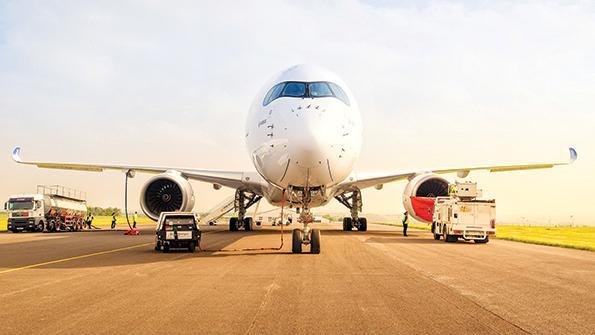What Boeing And Airbus Expect To See In Widebody Recovery

This is an abbreviated version of the article “Airbus And Boeing Expect Slow Widebody Demand Recovery” by Jens Flottau and Guy Norris from Aviation Week & Space Technology.
Find out more about becoming an Aviation Week & Space Technology subscriber here.
As the industry heads into the first major air show since the outbreak of the novel coronavirus pandemic, many airlines are benefitting from improved demand on short-haul domestic and regional routes. Long-haul traffic, in contrast, will only begin to recover in the coming months as the U.S. and potentially China open up more. But when demand for widebodies will begin to return remains a major unknown.
At the upcoming Dubai Airshow, a turnaround based on massive new orders is highly unlikely. Major carriers in the region are busy redefining their fleets a process started years ago that has not been completed.
- Airframers expect slow widebody demand recovery
- Regulatory uncertainties, market shifts cloud outlook
With too many uncertainties remaining and airlines in fragile financial shape, Airbus and Boeing will likely have to prepare for continuing low widebody production rates. But in the longer term, they are betting on an upcoming replacement cycle and some growth.
What size the market will return to is still anybody’s guess. Airbus has not updated its global market forecast (GMF) for two years and plans to publish its latest GMF on Nov. 13, on the eve of the show. The latest official figures it released in 2019 predate the pandemic and are hardly relevant anymore.
Several factors are influencing future patterns: lost traffic and growth on the one side and replacement and potential catch-up demand on the other. Should long-haul travel become more expensive because of more environmental taxation or other regulatory measures, demand would also suffer.
Based on a projected GDP growth of 2.8% for the Middle East, passenger traffic is projected to grow 4.1% in the next 20 years, with the largest single sector forecast to be the European market. Boeing predicts traffic to and from Europe will grow by 3.3%—essentially doubling the volume in 2019, when these routes generated more than 300 billion revenue passenger kilometers. The biggest growth sector, however, is expected to be routes connecting the Middle East with South Asia. Although the overall volumes will still be below those of European routes, Boeing expects traffic in this sector to grow 5.5% through 2040.




